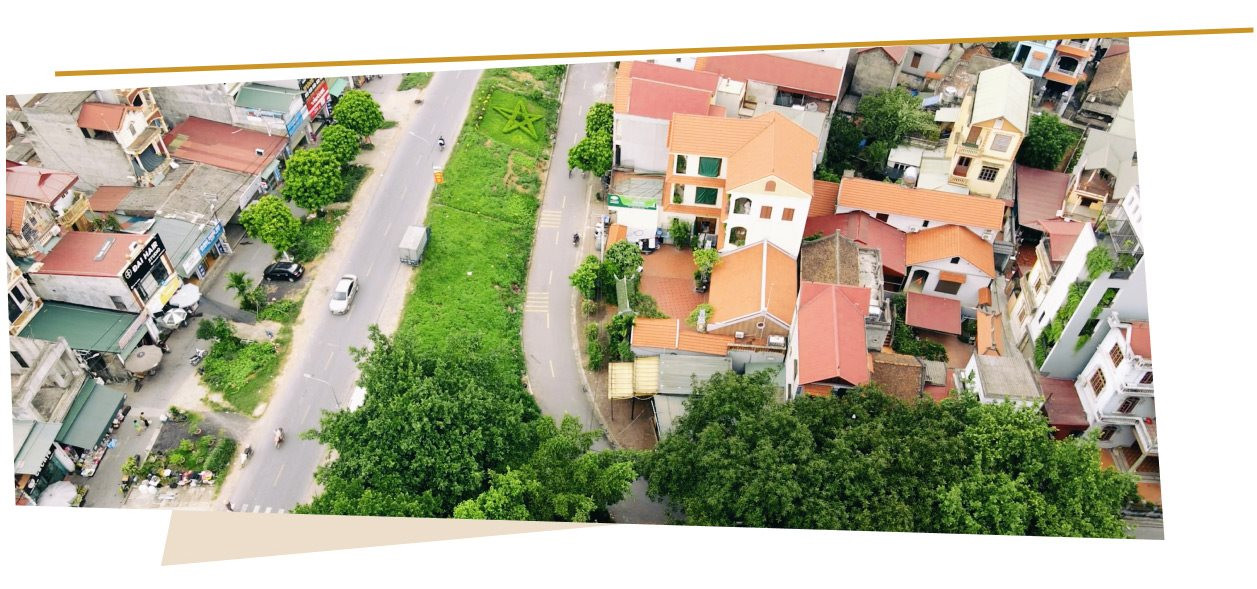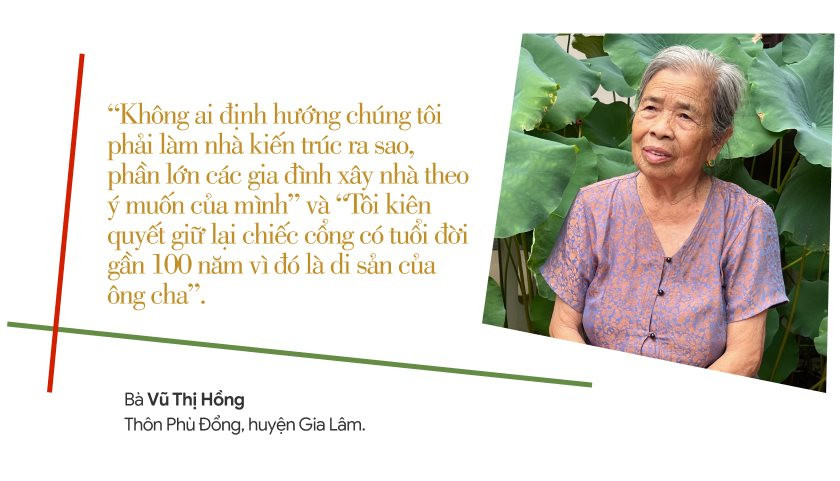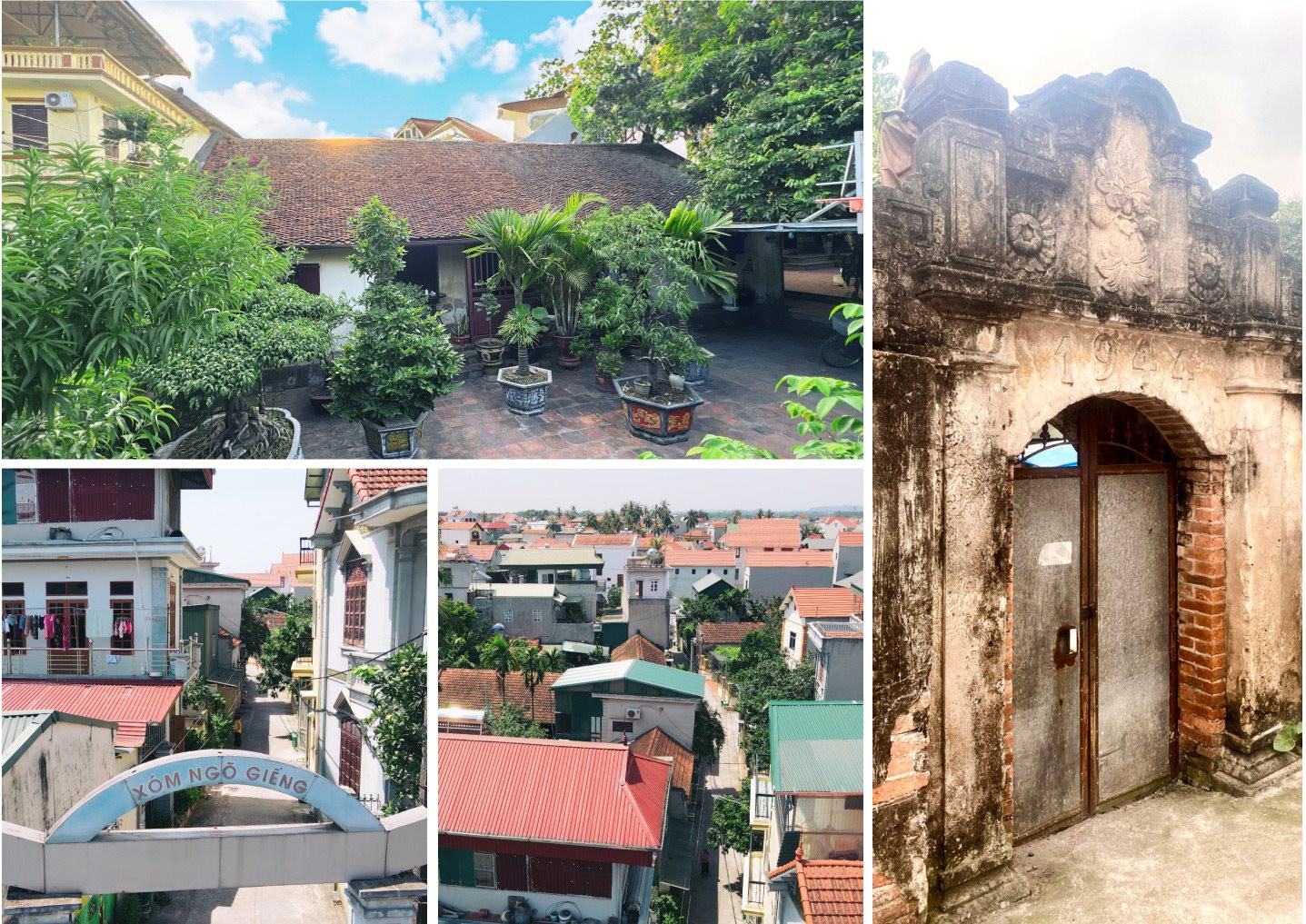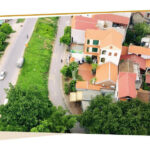Participating in the “6th Cultural Development and Elegant and Civilized Hanoian Building Press Awards 2023” competition, the team of authors including Tran Hong Van, Hoang Le Quyen, Doan Anh Tuan, and Nguyen Huu Tiep from Hanoimoi newspaper remarkably secured the A prize with their work “Rural Architecture: What Lies Ahead in the Future?” for five consecutive parts. The Hanoi Department of Culture and Sports’ Electronic Information Portal is honored to introduce the second part of this piece to our extensive readership!

The urbanization movement flows into the rural areas like a natural current. While farmers prosper, architectural direction falters. Everyone rushes to concrete their surroundings, and stack floors, deeming it the standard of modern living. The traditional house features of “three bays, two lean-tos, wooden columns, tea cabinets, horizontal lacquered boards, and parallel sentences” are becoming scarce. The contrast between multi-story buildings and ancient houses creates both aesthetic and landscape discomfort in the countryside.

On the smoothly paved road along the dike, Phu Dong Village (Phu Dong Hamlet, Gia Lam District) stands out in the economic restructuring shift from rice cultivation to paper flower and ornamental plant cultivation, bringing significant economic profits to the locals. Some families earn billions of dong per year through growing paper flowers and ornamental plants. The affluent lifestyle rapidly transforms the face of the village. Ancient house architecture in the village is now only faintly visible in a few households, with a gate and a few old house sections.
Within the village, the newly built mansions, shining in golden paint, starkly contrast with the brown-toned ancient houses adjacent to them. Outside the village gates, villas and colorful townhouses stand closely together, reflecting the prosperity of families but also adding a chaotic aspect to the predominantly rural appearance that is gradually taking on an urban character.

In a corner of Phu Dong Village, Phu Dong Commune, Gia Lam District, Hanoi (Photo taken on July 28, 2023)
As one of the multigenerational families residing in Phu Dong Village, Ms. Vu Thi Hong built a new house in 2000 when life was relatively prosperous. It was a two-story European-style villa painted in white. “No one dictated how we should design our houses; most families construct homes according to their own preferences,” shared Ms. Vu Thi Hong.
Despite constructing an entirely new house, and renovating the lavish garden, Ms. Vu Thi Hong remains steadfast in preserving the ancient gate from 1933 as a testament to her family’s traditions. To retain it, she even hired a team of workers to relocate the gate to a new position, allowing space for a newer, more accessible gate for vehicles.
“I am determined to keep this gate, nearly a century old, as it is a legacy from my grandfather,” Ms. Vu Thi Hong stated succinctly.
However, in Phu Dong Village, not every household has the means or the mindset, as Ms. Vu Thi Hong does, to preserve a part of the old architectural style. Most families in the hamlet have demolished fences, removed house gates, and adopted new architectural styles. In the narrow alleyways, modern mansions and townhouses dominate, each unique in design, color, and architectural clash.
In our quest to rediscover the essence of old houses, where the traditions of Vietnamese rural families are preserved, we recall the story of Mr. Dinh Van Phung’s family in the Dao Thuc Puppetry Village (Dong Anh District). His family is one of the three still maintaining a house over 100 years old.
According to Mr. Dinh Van Phung, the three-bay wooden house was once the hub of his extended family. At that time, the house had a garden and a pond at the back. As the children grew up, Mr. Dinh Van Phung divided the land for them to live separately, and the garden and pond were filled to build a new house. The ancient house was thus preserved, serving as a family chapel, with the remaining part as the activity space for the eldest son’s family. Now, after several renovations, the ancient house is adorned in vibrant brown-orange, equipped with air conditioning, and has an additional utility area on the left for convenience.
“Life changes and needs change; families with many children and grandchildren have to divide land to establish their own lives. The necessity to demolish gardens and fill ponds to build townhouses is inevitable. My house still has garden land, so I can preserve the ancient house. Many families have to dismantle houses to allocate for their descendants,” explained Mr. Dinh Van Phung.

Remaining ancient architecture is sparse amid modern concrete structures (Photo taken at the end of July 2023 in Hoai Duc and Dong Anh districts).

Addressing the shortcomings in rural housing architecture, Vice Chairman of the People’s Committee of Phu Dong Commune (Gia Lam District) Nguyen Van Tai admits that the remaining heritage among the people is not much.
“Without a planned architectural direction or guidance, residents tend to construct as they see fit. The majority of home construction is based on individual preferences, needs, and financial capabilities. Achieving overall architectural harmony in rural villages is challenging due to a lack of uniformity,” remarked Mr. Nguyen Van Tai.
From the perspective of an 8X generation youth, Nguyen Dinh Huong, Chief of Dai Ang Hamlet (Thanh Tri District), observes that while having modern-looking houses is commendable, there are numerous drawbacks.
“The rural population is rapidly increasing, and the residential area is gradually shrinking. The redevelopment, construction of houses, the choice of architecture, and building materials in the countryside don’t require approval from authorities. Primarily initiated by the people themselves, this has led to a chaotic rural architecture. It’s not just about new houses replacing old ones or concrete structures replacing tiled roofs; the lifestyle, activities, and thought patterns of the people are also changing. As people move into tall houses with walls and iron gates, social communication and village solidarity are affected. Previously, people freely visited each other; now, there’s hesitation at the gate. A simple ‘hey’ at a neighbor’s door used to bring help; now, many families celebrate events at restaurants or hire someone to cook, losing the lively, cohesive atmosphere,” expressed Nguyen Dinh Huong.
As a senior who has witnessed many changes in Dai Ang Village, Mr. Nguyen Danh Phong shared, “In the years before innovation, families lived simply, mainly in single-story houses, making the living space more open. In the present modern and bustling life, all families are building new houses. Well-off families construct large villas while working families build smaller ones; they are all townhouses. Those who come later want to build bigger and taller houses than those who came before.”
At the national conference on “Planning for New Rural Development Linked with the Urbanization Process,” organized by the Ministry of Agriculture and Rural Development in collaboration with the Ministry of Construction and the People’s Committee of Hai Phong City in February 2023, Deputy Minister of Agriculture and Rural Development Tran Thanh Nam assessed that the rapid urbanization process has significantly impacted peri-urban and rural areas, causing social changes that quickly affect construction-related issues. Many areas undergo spontaneous urbanization without proper planning, leading to landscape disruption, loss of traditional identity, and a mix of styles. State management of individual housing construction in rural areas has not yet been actively regulated by the government in terms of form and architectural criteria for rural housing.

Duong Da Communal House (Duong Xa commune, Gia Lam district) finds itself nestled amidst modern, high-rise architecture.
From the perspective of a practitioner, Professor, Ph.D., and Architect Hoang Dao Kinh believes that the modernization and urbanization of rural areas are essential needs and inevitable laws of societal development, which we must respect. However, there are very few instructional materials guiding farmers in building homes that align with current living conditions, are suitable for new technologies, and are both cost-effective and aesthetically pleasing. Therefore, blaming people for constructing homes by copying ideas, styles, and even imitating is unjust.
The issue at hand is the need to create house models and village planning models that are practical, incorporating the achievable and commendable aspects to persuade farmers and local authorities in rural areas. Simultaneously, efforts should be made to integrate them into daily life. Each locality must clearly identify which architectural elements should be preserved. Based on this, there should be guidance and promotion for residents to participate in preservation efforts.
“State management agencies need to focus more strongly on rural areas, finding every avenue to contribute to building the new rural areas. Scientists and architects need to turn their attention back to farmers and their household architecture. We need a policy to ensure that all rural residents have beautiful and cultured houses and villages,” said Architect Hoang Dao Kinh.
Along with the changes in each village’s features and housing, rural Vietnam is also witnessing significant transformations in craft villages and villages with specific trades. It’s not just a story about architecture; it’s also a contemplation on how the production space and creative environment within these craft villages can contribute to creating new values, economic development, and preserving the traditional culture of the villages.
Tran Hong Van, Hoang Le Quyen, Doan Anh Tuan, and Nguyen Huu Tiep
Bài 2: Vỡ cảnh quan, mờ bản sắc (hanoimoi.vn)

